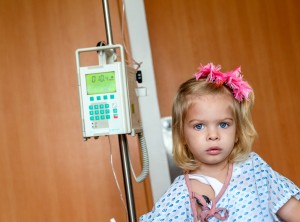 What may be good for battling one cancer may prove to be troublesome for developing another. A study published in CANCER from the University of Washington and the Fred Hutchinson Cancer Research Center in Seattle shows women who were treated with chest radiation during childhood were significantly more likely to develop breast cancer by the age of 40.
What may be good for battling one cancer may prove to be troublesome for developing another. A study published in CANCER from the University of Washington and the Fred Hutchinson Cancer Research Center in Seattle shows women who were treated with chest radiation during childhood were significantly more likely to develop breast cancer by the age of 40.
Specifically, the researchers, led by Norman Breslow, PhD, looked at data from 2,492 women who were treated for Wilms tumor, a rare childhood kidney cancer that can metastasize to the lungs, as children. Treatment of Wilms tumor consisted of 12-14 Gray low-dose radiation therapy delivered to the entire chest. All women studied survived at least until the age of 15.
Described in the study, “Breast Cancer in Female Survivors of Wilms Tumor: A Report from he National Wilms Tumor Late Effects Study,” data analysis showed a 20% chance of women developing breast cancer by age 40 if they received chest radiation therapy. This number was reduced to only 4% for women receiving abdominal radiation and to only 0.3% for Wilms tumor survivors who received no radiation.
Compared to the general cancer-free population, women receiving chest radiation had a 30% greater chance of developing breast cancer. Abdominal and no radiation treatment patients saw a 6% and 2% greater chance, respectively, suggesting a strong association between chest radiation as a child and breast cancer as an adult.
The results of this study might alter the way cancer screenings are recommended for patients. “Current guidelines call for early screening for breast cancer among survivors of childhood cancer if they have received 20 or more Gray of radiation therapy to breast tissue,” said Dr. Breslow in a news release from the publishing company. “This would exclude a large majority of patients who had received whole chest radiation for Wilms tumor. Our results suggest that the risk of early breast cancer among Wilms tumor survivors is sufficiently high that early screening might be considered an option for them also.”
[adrotate group=”1″]
Other doctors are on-board with Dr. Breslow’s suggestion. In an editorial that accompanied the published article, Jennifer Dean, MD, and Jeffrey Dome, MD, PhD, suggested Wilms tumor survivors at high risk for breast cancer to undergo a mammogram, breast MRI, or both once past the age of 25. However, these suggestions are only as effective as patients will allow them to be. “Because compliance with breast cancer surveillance is low in adult survivors of childhood cancer, barriers such as education of both survivors and providers should be addressed and mitigated,” they stated.
Regardless, a change in the future guidelines to recommend patients who received fewer than 20 Gray chest radiation as children to obtain mammograms or breast MRIs as adults may benefit and improve the breast cancer survival rate.


